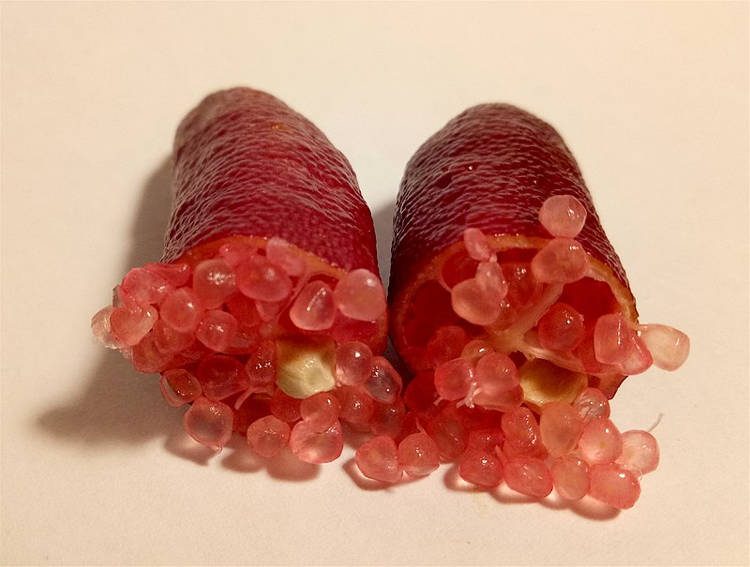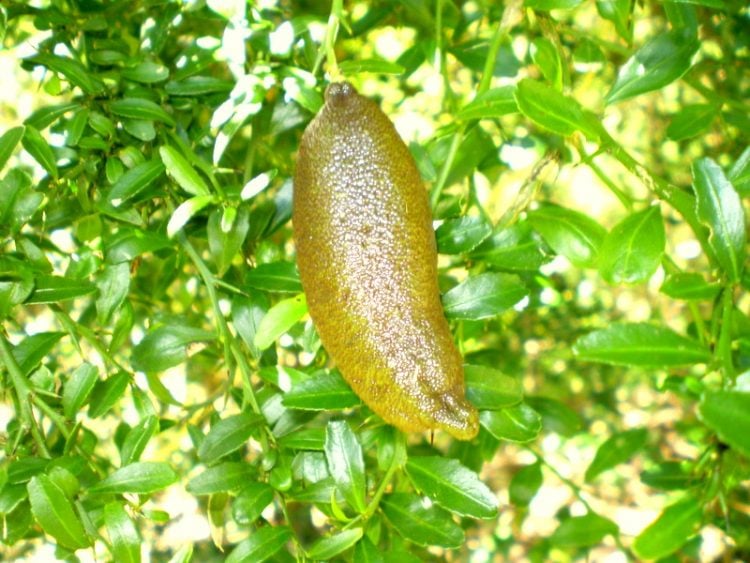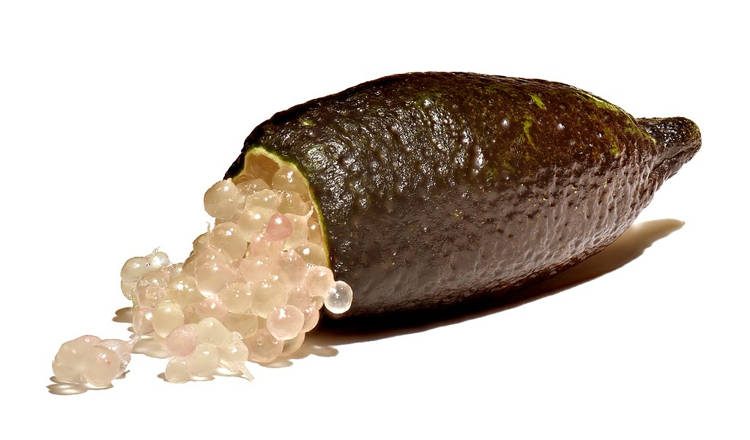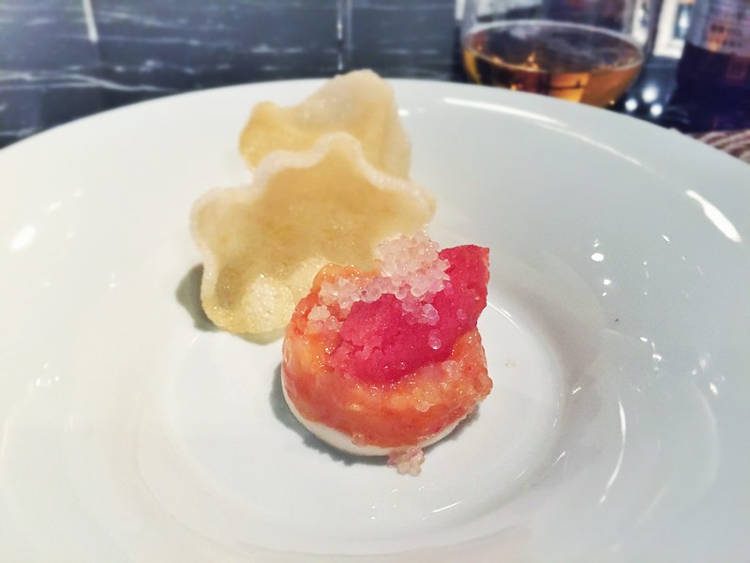Shaped more like a like a jalapeno pepper than a citrus fruit, the small finger lime yields tiny caviar-like pearls that burst with flavor when you bite into them.
Originating from the lowland subtropical rainforests of coastal Australia, Citrus australasica, or the Australian finger lime has become one of the most sough-after ingredients by Michelin star restaurants around the world. It’s not that they taste radically different than regular limes or lemons – in fact their flavor is described as a combination of the two – but the texture of their pulp really makes all the difference. Somewhat similar to the pomelo, these tiny citrus fruits contain caviar-like pearls that can be used to garnish posh dishes, ensuring a burst of acidic flavor when a person bites into them. Hence the nickname “caviar of citrus” and the crazy price tag that comes with it.

Photo: Ivan the Boneful/Wikimedia Commons
Over the last decade, the demand for finger lime caviar has become so great that plantations have sprung up in places like France or California. Still, the fruit is considered rare, and is currently sold on the open market for anywhere between $200 and $300 per kilogram. The high price has a lot to do with the low yield of finger lime plantations, as the trees requires a lot of attention, and many of the fruits they produce are not viable for sale.

Photo: Zaareo/Wikimedia Commons
French growers Perrine and Etienne Schaller were the first to commercially cultivate finger limes in their country, and they recently told Great Big Story that there several variety of the fruit, each with its own color and flavor, ranging from very acidic, to a very aromatic lemongrass-like taste.

Photo: Amada44/Wikimedia Commons
Because of their rarity and high price, you are unlikely to find finger lime caviar at your local supermarket. The Schallers themselves work with 25 Michellin star restaurants in France, a model replicated by most growers around the world.

Photo: T.Tseng/Flickr
So why would anyone pay a ridiculous amount of money for a fruit that essentially tastes like lemons and lime? Apparently the caviar-like texture is worth the extra cost, as the explosion of taste when you bite into them is very popular with upper-class diners.
“When I introduce it in a dish, it’s one of the central elements,” French chef Daniel Lutrand said. “Because it’s what awakens the dish, that’s what is the most important, and brings wonder to the client. The acidity will go ‘puff’!”
Apart from use of the fresh citrus caviar in restaurant dishes, the finger lime peel can also be dried and used as an equally expensive flavoring spice.






